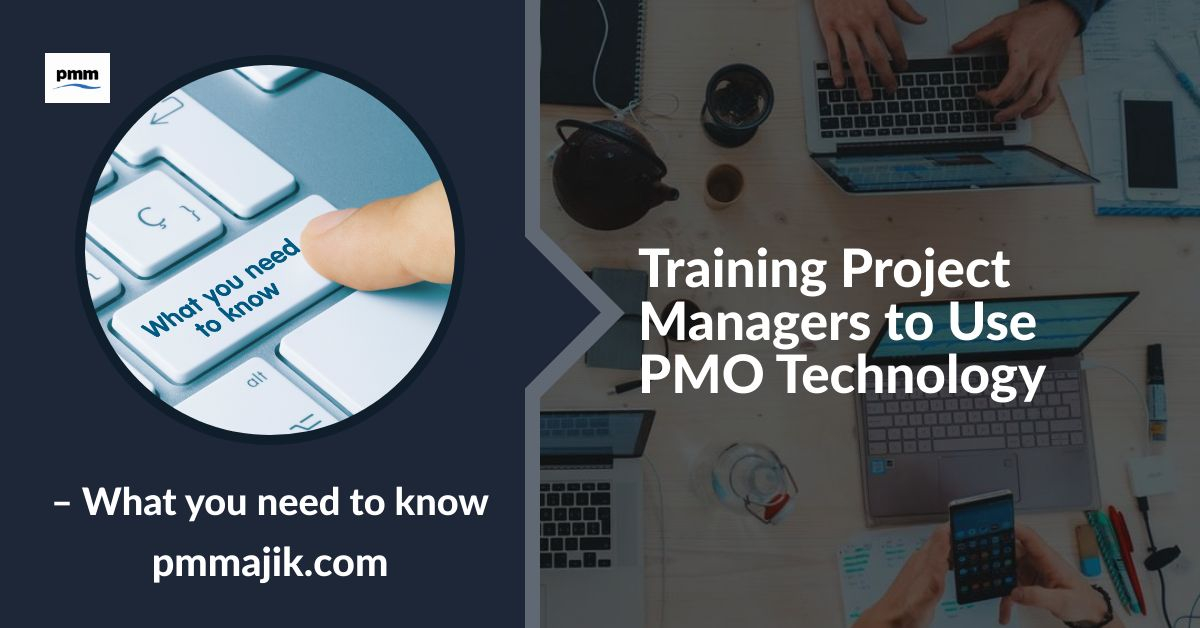Your project management office (PMO) will have its own unique technology stack in place. Maybe you’ve designed and honed it to a select few valuable software packages, or you’re working on putting a new one in place. Either way, you need to consider training project managers to use your PMO technology.
Even if your PMO has been using the same systems with your projects for a while, being able to train project managers (PMs) to use it is still important. This is because you’ll get new PMs, there may be updates to the systems, and people appreciate refresher training.
It’s up to your PMO to offer tech training since your systems are likely to be different to general software used across the company. With that in mind, we’re going to look at:
- The reasons why you need to train PMs to use technology
- Key considerations when planning training packages
- Which methods of delivery work best for technology training
Why does a PMO need to offer technology training?
In your PMO, you’ll have a range of different technology and software you use. Some of this may be used across the business as a whole, but you’ll also have bespoke tools you’ve brought in just for project tasks or even had designed for you, like your own spreadsheets.
The types of technology your office will expect your PMs to work with include:
- Collaboration and proofing tools
- Communications
- Time logging software
- Budget reporting
- Task management
People who are new to working with or under your PM will need to be inducted on each item in your tech stack. When you bring in a new system, just like a fresh template, that will also require training. Refreshing your team on software will also ensure you get maximum efficiency out of the tool.
What should a technology training course for PMs look like?
There are thousands of pieces of technology and software your PMO could use, and your particular combination is likely unique. We can’t tell you how to train your PMs on every piece of technology, but there are principles to follow when your design or commission your course.
Understand the learning curve
Just like every bit of tech is different, so are the capabilities of the PMs you’re asking to use it. Some will pick it up easily or might even already be familiar with it. Others will need to have support over a longer timeframe to gain confidence.
Be sure that you have a long-term support plan in place for new technology and have a Product Champion either on each team or as part of your PMO.
Focus on the user interface
Depending on the type of PMO leader you are, you might be thoroughly fascinated with the new tech you’re bringing in. It’s great to know the nuts and bolts or even to have someone on the team with in-depth system knowledge – not everyone wants or even needs that much detail.
Train your PMs on the actual functionality of the technology. Show them how to do their job, not how the software has been put together. Also, be sure they’re able to support their team to use it when needed, as a PM may be the first point on contact for smaller issues.
Take advantage of documentation
There’s no need to reinvent the wheel when designing a tech training course. The company you’ve sourced the technology from should supply documentation and support so you can get the best out of it and remain a loyal customer.
Use the materials provided by the vendor to make your training accurate. The company already knows how to get the best out of what they sell, so take advantage of that.
What training methods work for technology training?
It stands to reason that a lot of training on how to use software will be computer-based. Sitting your PMs in front of a screen and saying “learn” isn’t going to cut it though.
Having a trainer present examples and troubleshoot, giving PMs time to play with a sandbox version of the tech, and having videos and flow charts on your LMS should all be used. You can even bring in trainers from the software company if you have the budget and need.
The take-home
You should be training managers to use your PMO technology; it’s not all the job of HR. You will have tech that only your project teams use and need to be responsible for showing everyone how to use it. Employing a range of training methods will make it effective and repeatable for new recruits, too.






